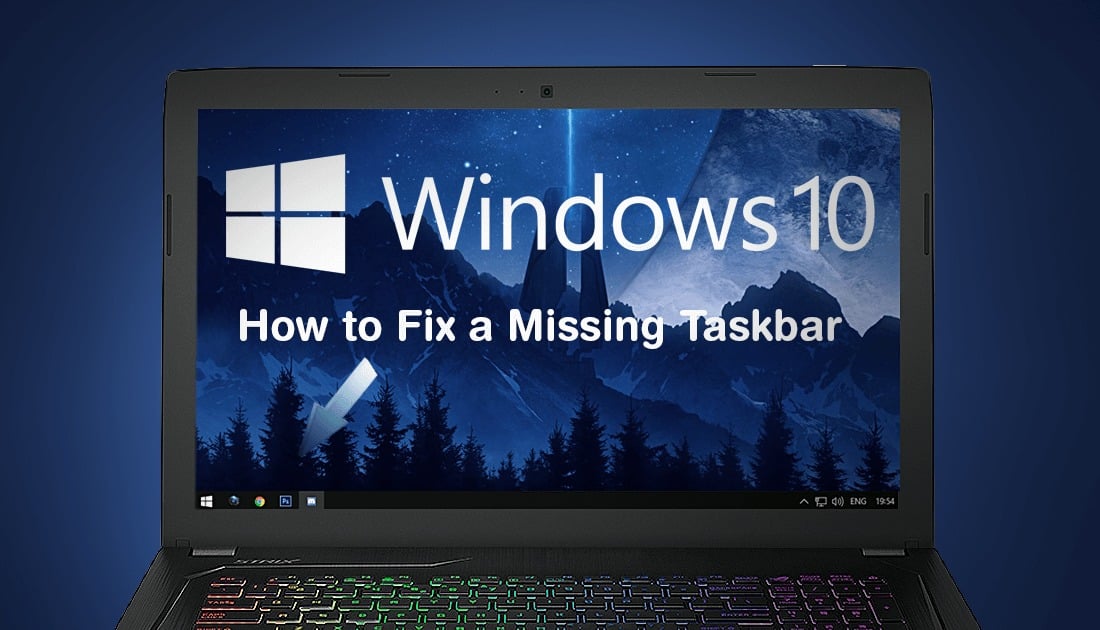842
If your taskbar suddenly disappears, many tasks can only be performed via detours. There are several possible reasons why the bar may have disappeared.
Taskbar gone: Investigating typical problems
Depending on why the taskbar is missing, there are various possible solutions. If you don’t know the reason, you should try the approaches in order.
- Hidden: Move the mouse to the top, bottom, left, and right edges so that the bar reappears. Right-click ☻ Taskbar settings ☻ Taskbar behavior ☻ Automatically hide the taskbar to display it permanently. In Windows 10, right-click ☻ Taskbar settings ☻ Automatically hide the taskbar in desktop mode.
- Error in Windows: If Windows no longer wants to show the taskbar, press [Win] + [I] to open the settings. Go to “Personalization ☻ Taskbar ☻ Taskbar behavior ☻ Automatically hide the taskbar”. In Windows 10, open the menu in Settings via Personalization ☻ Taskbar.
- Explorer crashed: If the Windows Explorer process has crashed or been terminated, the taskbar will also disappear. Start the Task Manager using the key combination [Ctrl] + [Shift] + [Esc] and open explorer.exe via “Run new task.”
- Incorrect screen mode: If Windows is accidentally using a different display profile, you may not see the taskbar on your screen. Press [Win] + [P] and select the correct mode from the projection menu.
- Restart: If that doesn’t help, the only thing left to do is restart, which should fix everything.
- System files corrupted: Finally, corrupted system files may also be the cause. Open the command prompt as administrator and run the command sfc /scannow. Wait until the process is complete, then restart your PC.
Further solutions if the taskbar is missing
However, there are other possible causes for the sudden disappearance of the taskbar that you can investigate:
- Full-screen mode of applications: When programs such as games or video players are running, they can hide or completely cover the taskbar. Close the corresponding program to regain access to the taskbar.
- Software conflicts: Third-party programs can also affect the behavior of the taskbar. These can include security software or modification tools for Windows. If you have recently installed new software, you should remove it on a trial basis.
- Faulty Windows update: A Windows update may have caused the error. Check under “Settings ☻ Windows Update ☻ Update history” to see if any new updates have been installed recently and remove them from Windows 11. You can also search for updates or hotfixes that correct the error.
- Driver issues: Outdated system drivers, especially graphics card drivers, can cause display issues. You should therefore update them to the latest version, such as the one from Nvidia.
- Viruses: In rare cases, malware or viruses can cause the taskbar to disappear or otherwise disrupt the system. Therefore, run a full virus scan to rule out infection by malware.
Taskbar disappeared: Delete registry entry
If none of the above approaches work, the problem is a little deeper. But there is a solution for this too. However, it requires editing the registry database:
- Please note that making changes to the registry is risky. Since you have to delete an entry, you should first make a backup of the registry. If problems arise, you can then return to the original state.
- Press the [Win] + [R] keys simultaneously to open the “Run” command. Enter regedit and confirm with OK. The registry editor will now open.
- Then navigate to the following path on the left side: HKEY_CURRENT_USER/Software/Microsoft/Windows/CurrentVersion/Explorer/StuckRects3 (Windows 11) or …/StuckRects2 (Windows 10).
- Right-click on Settings and select the Delete option. Confirm with Yes and restart your computer. The entry will be recreated and the taskbar should be visible again.
- Background: The entry contains information about the taskbar position and its settings, such as whether it is automatically hidden or which edge of the screen it is located on. Deleting it restores the default value.

